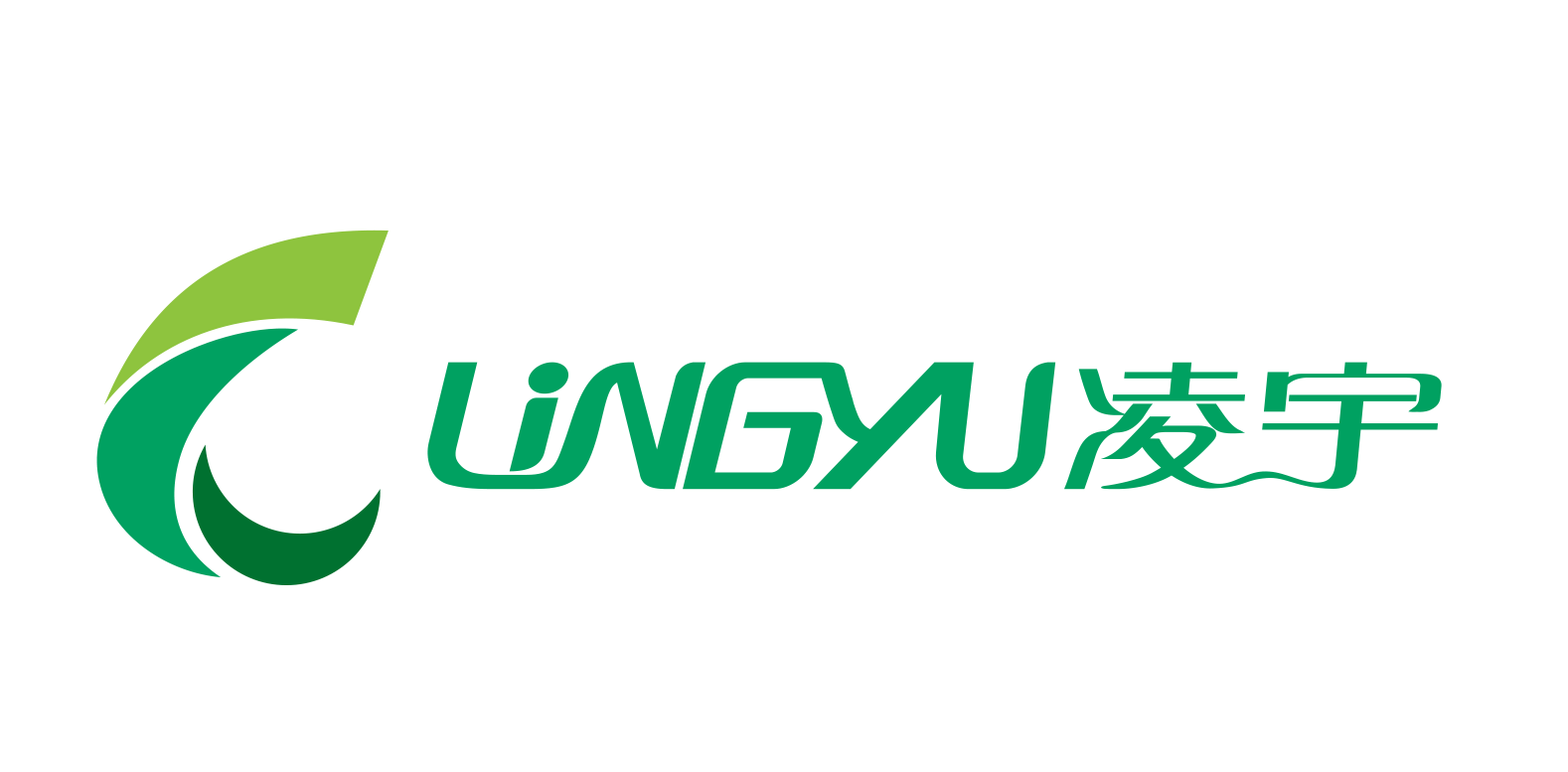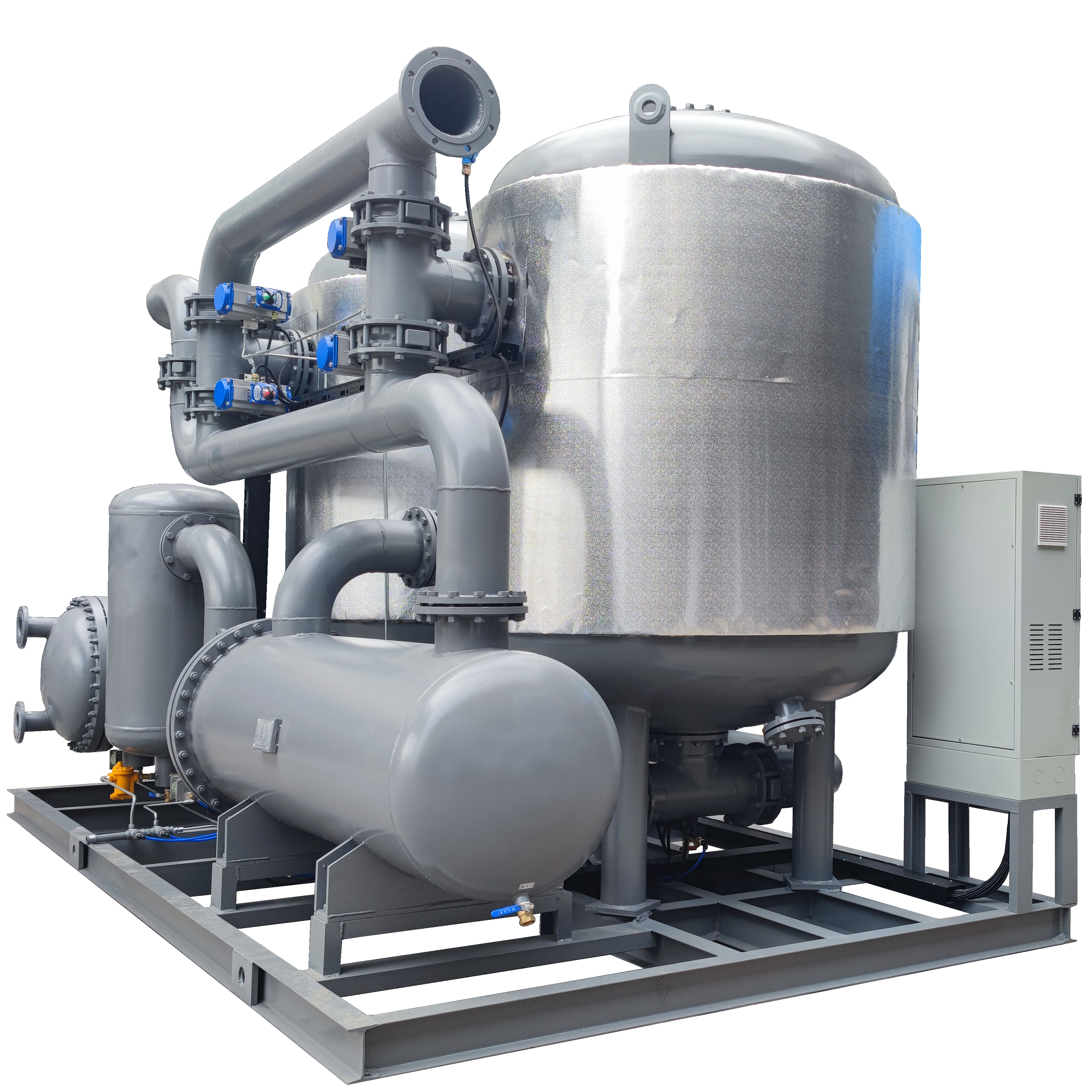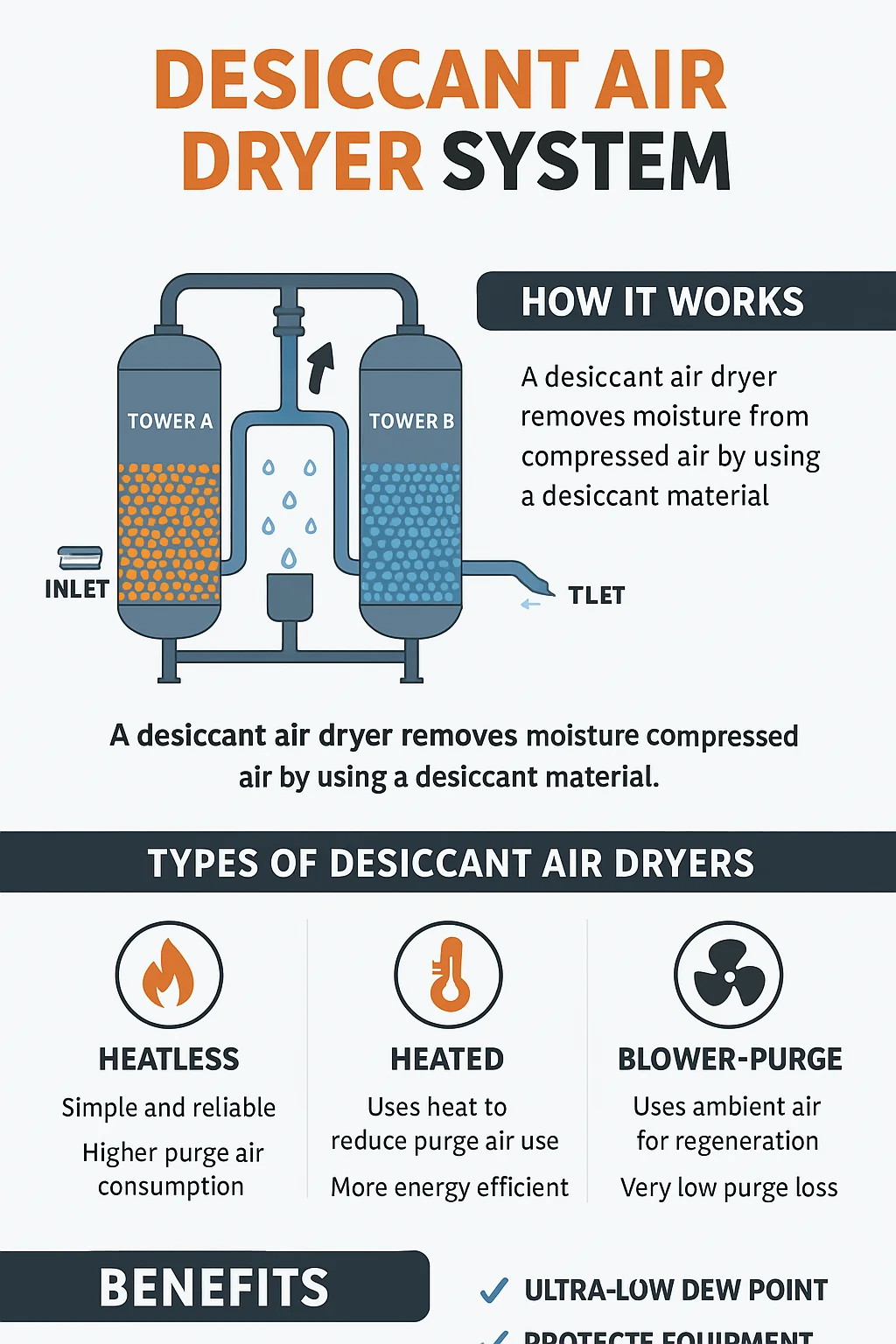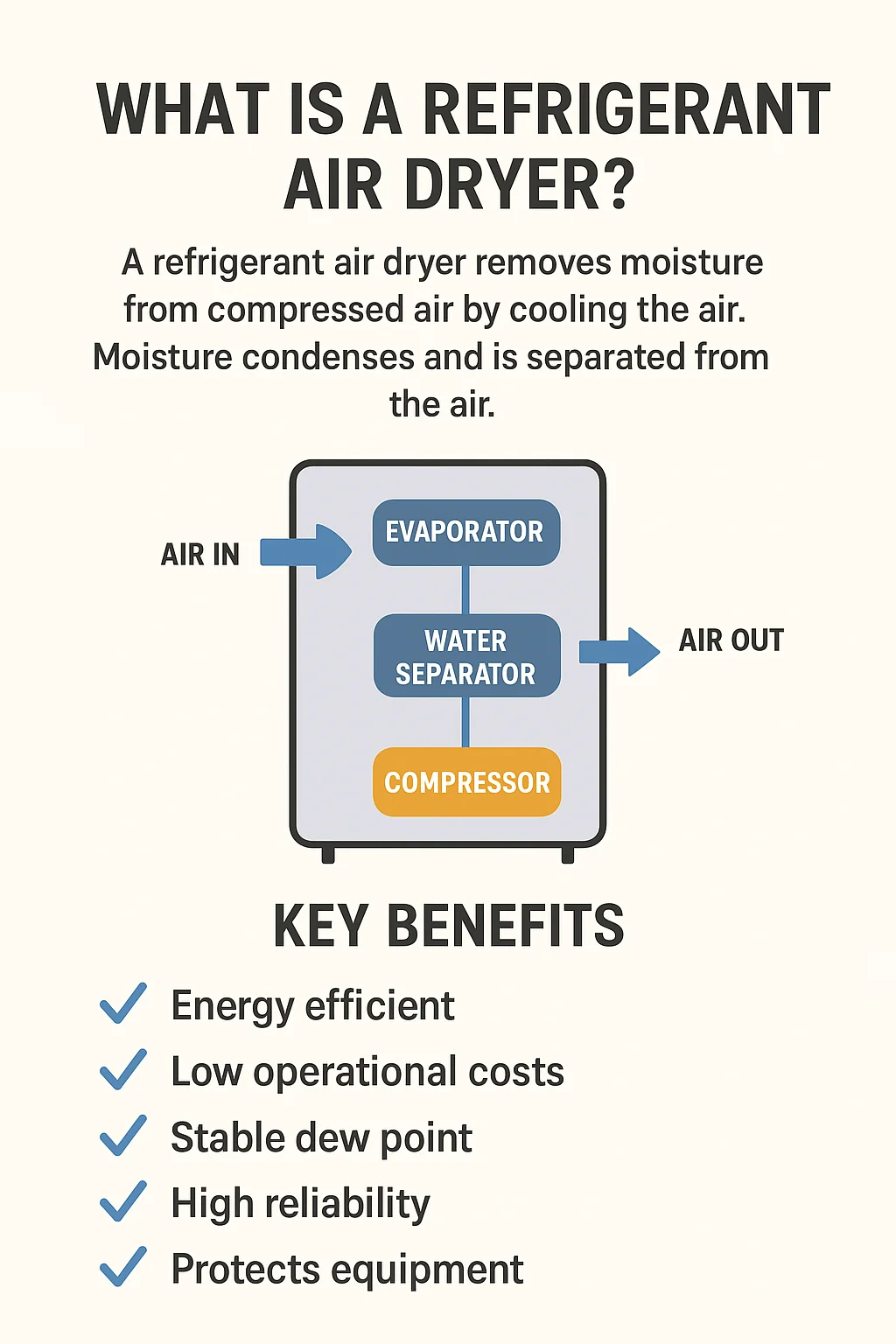A zero air loss compressed heat regeneration dryer is one of the most advanced and energy-efficient compressed air post-treatment solutions available today. Designed to remove moisture from compressed air without consuming purge air, it maximizes efficiency and minimizes operating costs. But there’s a key component that plays a vital role in ensuring optimal performance—the electric heater.
In this article, we will explain what a zero air loss compressed heat regeneration dryer is, how it works, and why the electric heater is a crucial part of its operation.
Understanding the Zero Air Loss Compressed Heat Regeneration Dryer
The zero air loss compressed heat regeneration dryer operates based on heat regeneration technology. Instead of wasting compressed air during the regeneration process, it utilizes waste heat from the compressor to regenerate the desiccant material.
Here’s how it works:
Compressed air enters the dryer at a high temperature.
The waste heat from the compressed air is used to heat and regenerate the moisture-saturated desiccant.
This regeneration process removes the moisture, restoring the desiccant’s drying capability.
By using the compressor’s waste heat, the zero air loss compressed heat regeneration dryer significantly reduces energy consumption compared to traditional dryers that use purge air for regeneration.
Why the Electric Heater Is Needed
While the concept of using waste heat is efficient, it comes with a limitation—waste heat alone is often not enough to reach the optimal regeneration temperature. That’s where the electric heater comes in.
1. Providing Additional Heat Energy
The zero air loss compressed heat regeneration dryer must reach a specific temperature for effective desiccant regeneration. If the waste heat from the compressor is insufficient, the electric heater compensates by providing the additional heat required.
2. Ensuring Precise Temperature Control
Different industrial applications have varying moisture levels and dew point requirements. The electric heater allows precise temperature control by adjusting its power output, ensuring the dryer can meet strict dew point targets under any conditions.
3. Faster Startup Heating
When starting the system, the available waste heat may be minimal. The electric heater can quickly raise the desiccant temperature to the required level, reducing startup time and improving operational efficiency.
4. Backup Heating During Low Waste Heat Conditions
In some cases, the compressor’s discharge temperature might drop due to lower load or seasonal changes. The electric heater acts as a reliable backup, ensuring the regeneration process remains effective even when waste heat is insufficient.
Benefits of an Electric Heater in a Zero Air Loss Compressed Heat Regeneration Dryer
Adding an electric heater to a zero air loss compressed heat regeneration dryer brings multiple operational advantages:
Consistent Dew Point Performance – Even in fluctuating inlet temperature conditions.
Improved Regeneration Efficiency – Ensuring complete moisture removal from the desiccant.
Enhanced Equipment Longevity – Preventing incomplete regeneration that could damage the desiccant over time.
Operational Flexibility – Adapting to different seasonal and workload variations.
Industrial Applications
The zero air loss compressed heat regeneration dryer is widely used in industries where high-quality dry air is essential:
Pharmaceuticals – Maintaining sterile conditions and preventing contamination.
Food & Beverage – Protecting products from moisture-related spoilage.
Electronics Manufacturing – Preventing corrosion and moisture damage to sensitive components.
Automotive – Ensuring pneumatic tools and systems run smoothly without moisture-related failures.
FAQ: Zero Air Loss Compressed Heat Regeneration Dryer
What does “zero air loss” mean in this dryer?
It means the dryer regenerates the desiccant without consuming purge air, which saves energy.
Why can’t waste heat alone regenerate the desiccant effectively?
Because in many operating conditions, waste heat cannot consistently reach the temperature required for complete regeneration.
Does the electric heater run all the time?
No. It activates only when the waste heat is insufficient or during system startup.
Will adding an electric heater increase energy costs?
While it does consume electricity, it ensures complete regeneration, which actually improves efficiency and reduces costly downtime.
Can the dryer work without an electric heater?
Technically yes, but performance will suffer in low waste heat conditions, leading to higher moisture levels in the output air.
Conclusion
The zero air loss compressed heat regeneration dryer is a breakthrough in energy-saving compressed air drying technology. By combining waste heat utilization with an electric heater, it ensures reliable dew point control, faster startup times, and stable operation across varying conditions.
For industries that demand high-quality dry air and maximum energy efficiency, investing in a zero air loss compressed heat regeneration dryer with an electric heater is not just a smart choice—it’s a long-term performance guarantee.







